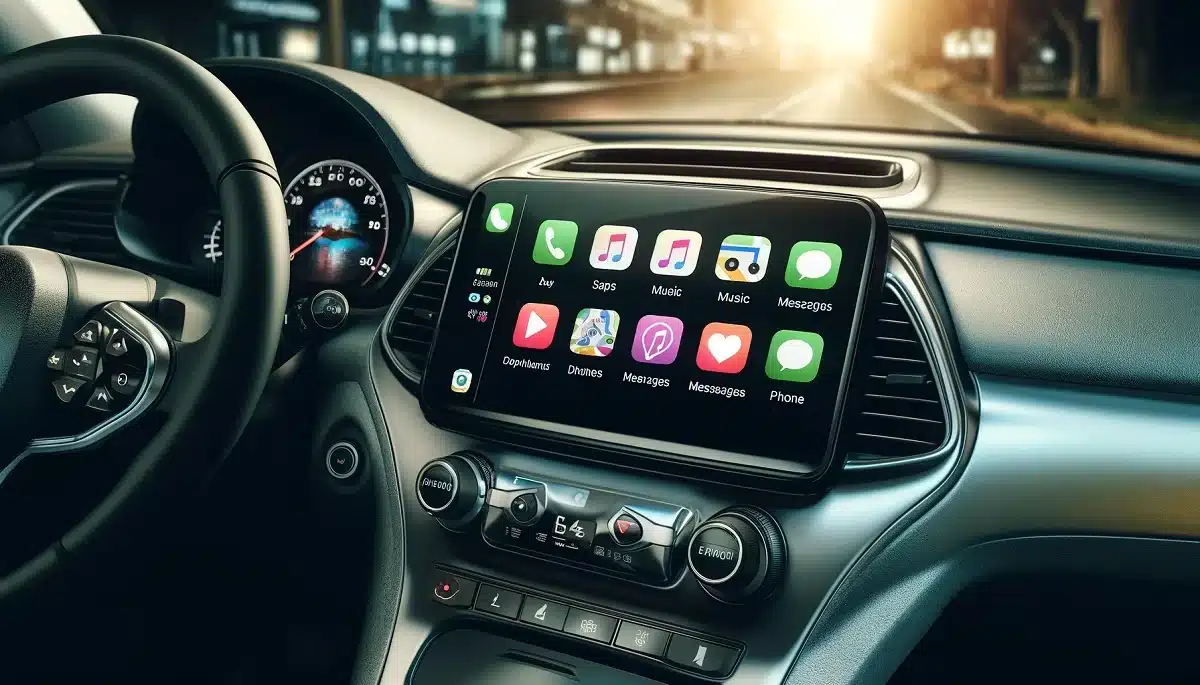Vehicles, as marvels of modern technology, contain a complex array of systems and components designed to enhance driving safety and comfort. There’s a series of warning lights on the dashboard that inform drivers about the health of these systems.
These lights can be considered the “language” of the vehicle, providing essential information about potential issues within various systems. Understanding what the warning lights in your vehicle signify is crucial for driving safety.
Meanings of Warning Lights in Vehicles
Warning lights are located on the dashboard and use colors to convey different levels of alerts. For example, a red light typically indicates an urgent situation, while a yellow or orange light signals a warning that requires attention. Correctly interpreting these lights and taking appropriate measures when necessary plays a significant role in preventing possible malfunctions and extending the vehicle’s lifespan. This knowledge prepares drivers for potential problems on the road and helps avoid costly repairs.
Engine Temperature Warning

When the engine overheating warning light illuminates, it’s important to pull over safely and wait for the engine to cool down. After cooling, check the coolant level, fan operation, radiator cap, and any possible coolant leaks.
Oil Pressure Warning
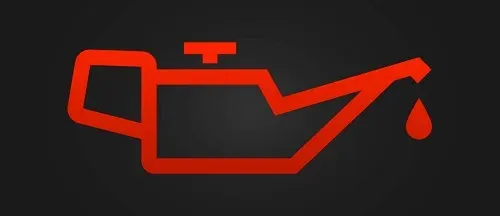
If the oil pressure warning light turns on, immediately check the oil level and pressure. Low oil pressure can lead to serious engine issues.
Brake System Warning

The illumination of the brake warning light while the vehicle is running indicates that the handbrake is engaged. The light should go off once the handbrake is released. However, if it doesn’t, it may indicate a problem in the brake system, such as a loss of hydraulic pressure or very low brake fluid level.
Battery/Charging System Warning
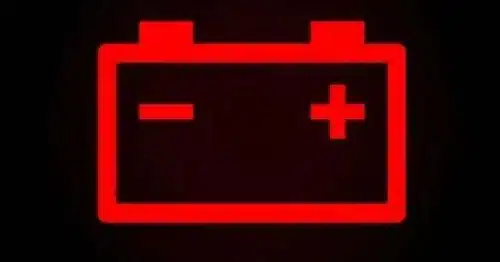
The battery system warning light signifies an issue with the battery or alternator. In this situation, it’s advised to turn off electrical accessories (like steering heating, seat heating, etc.) and visit a service center as soon as possible.
Warning Lights for Safety Reasons
Service Warning Light

A reminder that your vehicle’s maintenance time has arrived. If this light is on, it means your vehicle needs to be serviced.
Side Airbag Warning Light

Indicates that your side airbags are not working or there is a fault.
EPS (Electric Power Steering) Warning Light
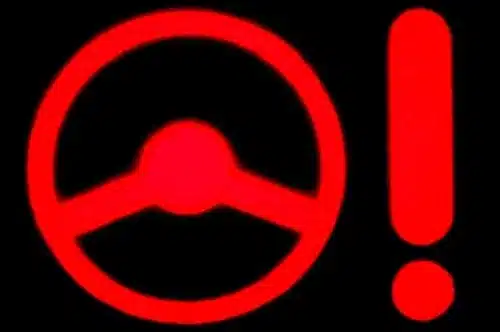
This lamp shows that the Electric Power Steering system, which adjusts the resistance of the steering according to your vehicle’s speed, is active. If it stays on, it indicates a problem with the system.
Brake Pedal Warning Light
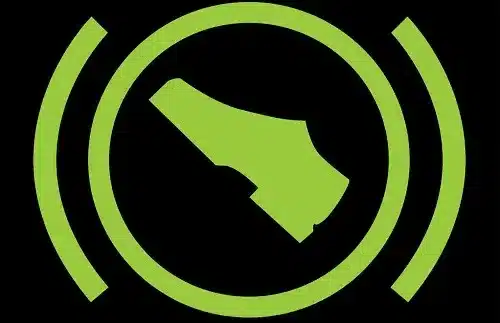
Illuminates when there is a problem in the brake system and indicates that the brake pedal needs to be pressed, meaning the vehicle should be taken to service.
Parking Brake Warning Light
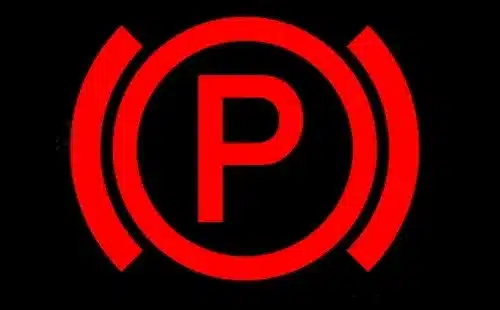
In automatic vehicles, a warning light that indicates the parking brake is engaged.
Information Warning Light

A general indicator that conveys various warnings and information to the driver. Depending on the vehicle model, this light, especially in vehicles with a touchscreen, can be used to show the details of the warning.
Tire Pressure Warning Light

A critical indicator among vehicle gauges, the tire pressure warning light signals that one or more of your tires is not at the proper pressure.
ESC/ESP Warning Light
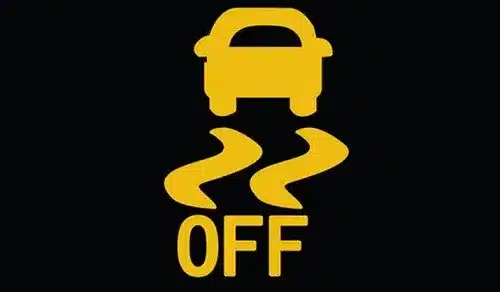
This warning light indicates that the Electronic Stability Control (ESC) or Electronic Stability Program (ESP) has been activated, which prevents loss of vehicle control during sudden maneuvers. When “Off” is displayed, the system is off.
Steering Lock Warning Light
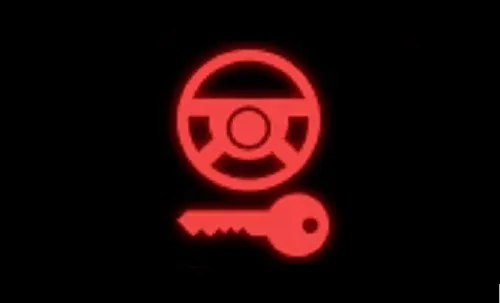
Illuminates when your steering lock is active and indicates that the steering cannot be moved. To unlock, try inserting your key into the ignition and turning the steering wheel.
Trailer Hitch Warning Light

This light indicates that a connected trailer or tow hitch is not properly locked.
Air Filter Clog Warning
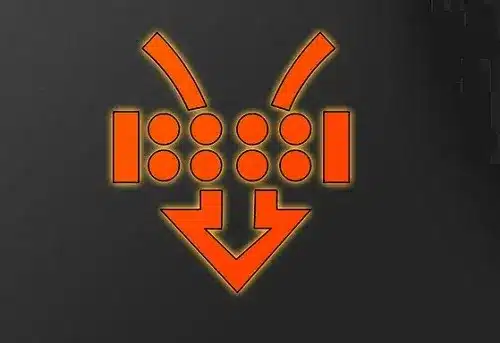
Indicates that the engine’s air intake has decreased and the air filter needs to be cleaned or replaced.
Child Lock Warning Light
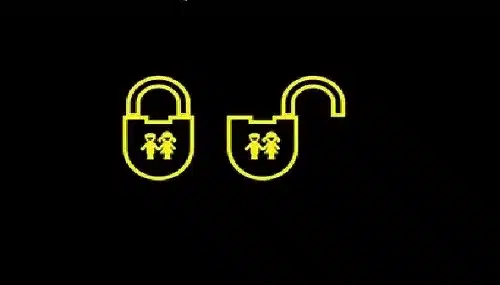
An indicator that shows whether your vehicle’s child safety lock is active or not.
Catalytic Converter Warning
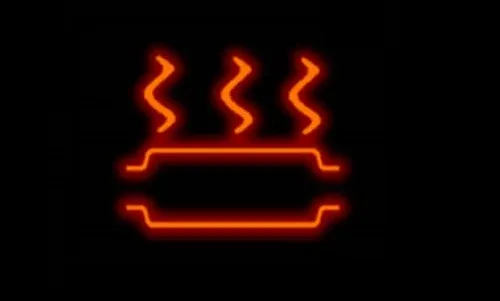
Signifies a problem with the catalytic converter, a crucial component of the exhaust system, usually due to overheating or damage.
Brake Fluid Level Warning
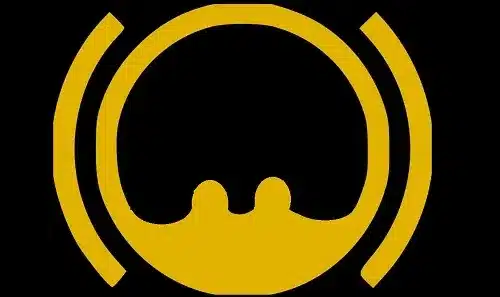
This warning light comes on when the brake hydraulic fluid level drops below the required minimum.
Brake Pad Wear Warning
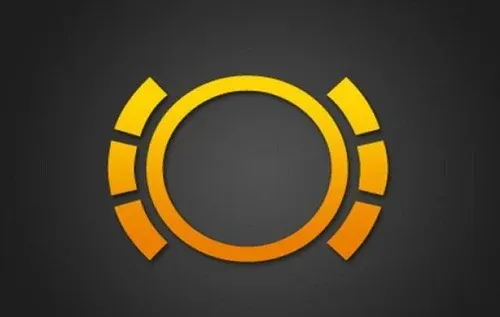
Indicates that the brake pads are severely worn and it’s time for a replacement.
Icing Warning Light

Indicates that the outside temperature is extremely low and roads may be icy, reminding drivers to be extra cautious.
Fuel Cap Warning Light
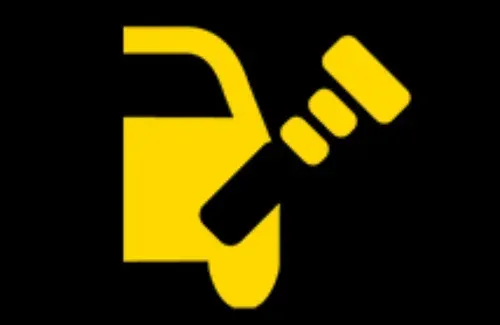
If this light is on, it means your vehicle’s fuel cap is not properly closed or has been left open.
Traction Control System Warning

Signifies a malfunction in the vehicle’s traction control system, indicating the need for extra caution on the road.
Electronic Parking Brake Warning
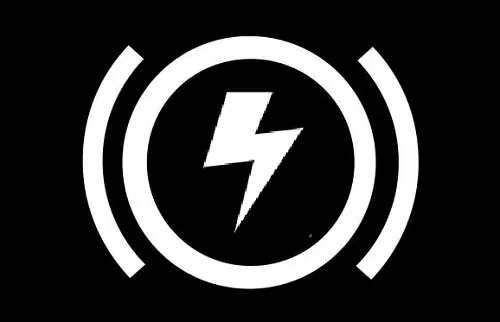
This warning indicates a problem with the electronic parking brake system and emphasizes the need for a check-up.
Following Distance Warning Light
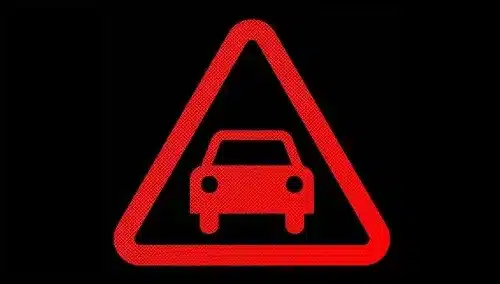
This light warns that the safe distance to the vehicle in front is not being maintained, advising you to increase the distance.
Brake Light Warning
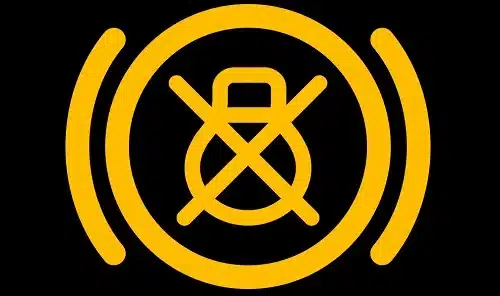
Indicates that your brake lights are not functioning. Upon encountering this warning, you should immediately have your brake lights checked.
Automatic Transmission Warning Light
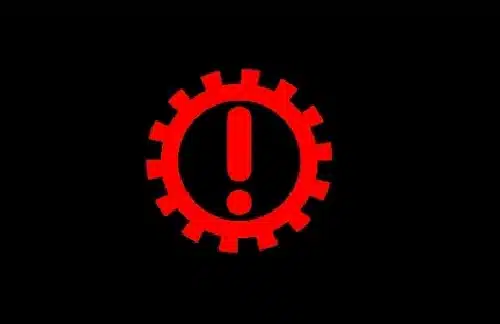
Indicates a problem with your vehicle’s transmission. Often, information about the problem will also be displayed on your screen. When this light illuminates, it is recommended to take your vehicle to a service center.
ABS System Warning Light
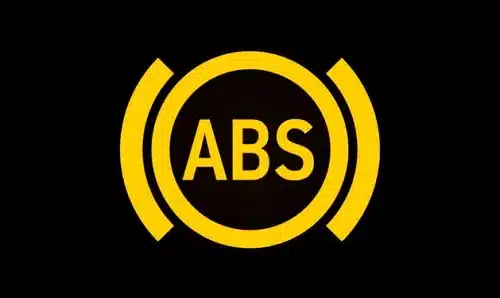
This light shows that your vehicle’s ABS brake system is being checked and usually goes out shortly after the ignition is turned on. If it remains on, it could indicate a problem originating from the ABS brake system.
Four-Wheel Drive System Warning Light

Indicates a malfunction in your vehicle’s four-wheel-drive (4WD) system if the light stays on continuously.
Airbag Warning Light

A warning that there is a problem with your airbag system. If the light stays on continuously or flashes, it is essential to have it checked for your safety.
Airbag Deactivation Warning

This light indicates that your vehicle’s airbag system has been deactivated.
Suspension Warning Light
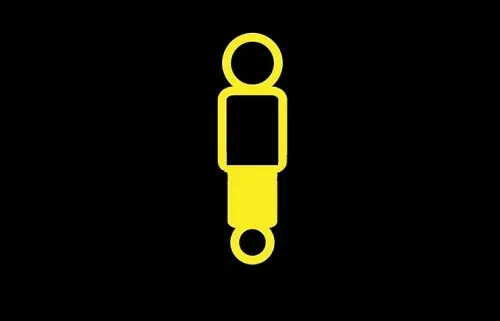
Illuminates when there is a problem related to your vehicle’s suspension system. This can be due to various reasons; such as mechanical failures, sensor problems, or electrical malfunctions.
Air Suspension Warning Light
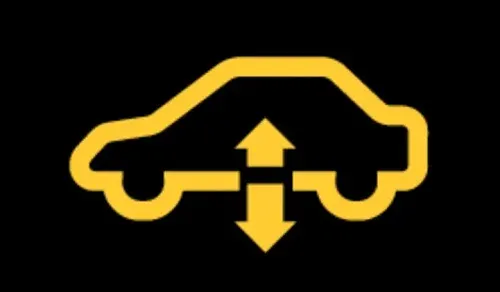
Indicates a problem with your air suspension system.
Vehicle Indicators for Illumination Purposes
Low Beam Warning Light

This warning light indicates that your vehicle’s low beams are currently active. Low beams are used especially in urban driving and reduced visibility conditions. This light confirms that your headlights are working properly and illuminating your path, ensuring both your safety and the awareness of other drivers of your presence.
High Beam Warning Light

The high beam warning light indicates that your vehicle’s high beams have been activated. High beams are used in rural areas or on poorly lit roads to improve visibility. This light shows that your high beams are active, reminding you to adjust your headlight usage according to driving conditions.
Headlight Leveling Malfunction Warning Light
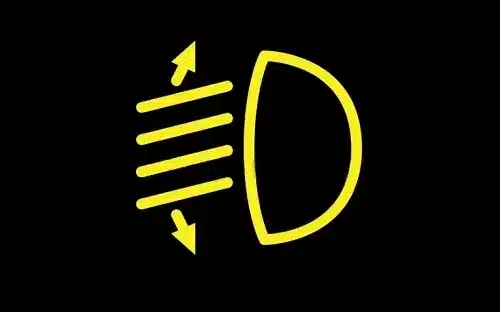
A warning light indicating a problem with your vehicle’s headlight height adjustment system. This system automatically adjusts the height of the headlights depending on the load of the vehicle, ensuring maximum visibility without dazzling oncoming drivers. When this light illuminates, it means the system needs to be checked and possibly repaired.
Front Fog Light Active Indicator

This symbol indicates that your vehicle’s front fog lights are turned on. In foggy weather conditions or low visibility situations, fog lights illuminate the road more effectively, enhancing your driving safety. This light signifies that your fog lights are in active use.
Rear Fog Light Active Indicator

Illuminates when the rear fog light is active. In dense fog or heavy rain conditions, rear fog lights help make the rear of your vehicle more visible to other drivers. This light indicates that your rear fog lights are currently in operation.
Rain Sensor and Automatic Light Indicator

Rain and light sensors, found in certain vehicles, activate the headlights automatically when rain is detected or the ambient light decreases. This light indicates that these systems are active and your vehicle is automatically adjusting the headlights according to external conditions.
Automatic High Beam Activation Light
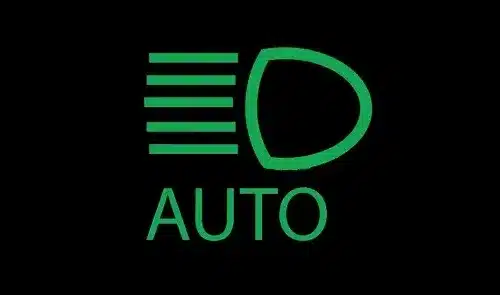
The automatic high beam system detects oncoming traffic and automatically switches from high to low beam. This light indicates the system is active and your high beams are automatically adjusted as needed.
Adaptive Headlight System Warning Light

The adaptive headlight system automatically adjusts the angle of the headlights based on the vehicle’s speed and steering movements, ensuring better illumination of the road on turns and curves. This light indicates that the adaptive headlight system is active and your vehicle’s headlights are automatically adjusted according to driving conditions.
Exterior Lighting Fault Warning Light
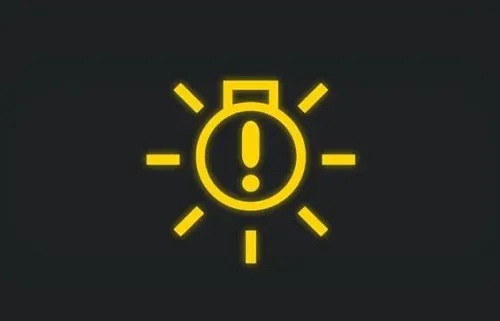
This light indicates that one of your vehicle’s exterior lighting systems is faulty. This could mean a problem with any of the headlights, rear lights, turn signals, or license plate lights. When encountering this warning, it is important to check and, if necessary, repair your vehicle’s exterior lighting components.
Standard Dashboard Indicator Lights
Vehicle dashboards come equipped with a series of standard indicator lights that provide critical information about the current status and potential warnings regarding the vehicle’s various systems. These symbols and signs are generally similar across many car brands and models, helping drivers understand their vehicle’s performance and needs. Here are some commonly encountered basic dashboard indicator lights and their meanings:
Low Fuel Warning Light

Activated when the fuel level is low, this light indicates that the fuel tank needs to be refilled soon. This warning reminds the driver that fuel is running low and a gas station should be visited at the earliest convenience. Running out of fuel can lead to the vehicle unexpectedly stopping and can pose potential safety risks.
Key Not in Vehicle Warning Light

In vehicles with keyless entry and start systems, this light indicates that the car key or smart key is not inside the vehicle. This means the car cannot be started or the keyless entry system cannot be used.
Open Hood Warning Light
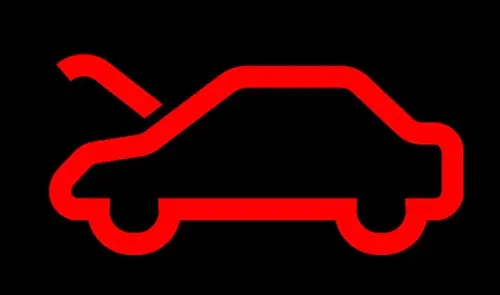
This warning light indicates that the vehicle’s hood is not fully closed or has been left open. An open hood can be dangerous, especially at high speeds, as it can suddenly open fully, obstructing the driver’s view.
Fan Warning Light

This symbol shows that your vehicle’s cooling or heating system fan is in operation. The fan being on indicates that the engine requires cooling or the vehicle’s heating/cooling systems are being actively used.
Open Door Warning Light
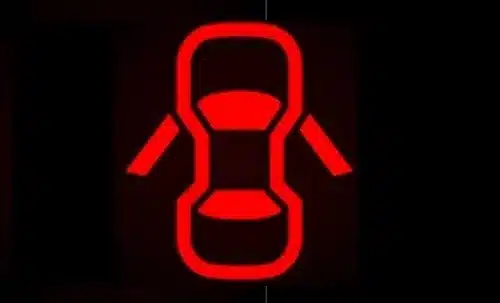
This indicator shows that one or more of the vehicle’s doors are not fully closed. Doors not properly closed can pose a risk to driving safety and can also create an unsafe situation for passengers inside the vehicle.
Front Windshield Defroster Active Indicator

The front windshield defogger indicator light signifies that the heating system for clearing fog or ice from the windshield has been activated. Especially in cold weather conditions, this feature quickly clears the front windshield, maintaining a clear field of vision during driving and enhancing driving safety.
Windshield Washer Fluid Level Warning
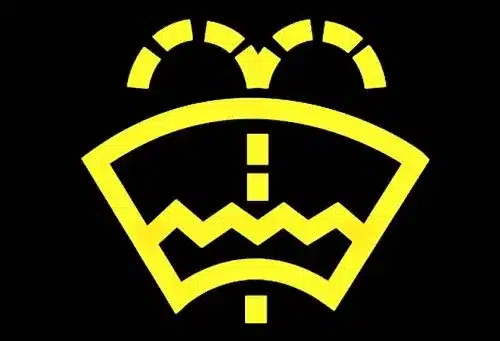
This warning light indicates that the vehicle’s windshield washer fluid level is low. It may light up briefly when the engine is started but if it continues to stay on during operation, it indicates that the washing fluid is about to run out. A low washer fluid level can impair visibility by not adequately cleaning a dirty windshield, posing a risk to driving safety.
Rear Window Defogger Active Indicator

This symbol indicates that the rear window defogging feature has been activated. Electric resistance wires heat up on the rear window, dissolving any fog or ice that may have formed on it. This helps to clarify the rear view, contributing to a safer driving experience.
Advanced Vehicle Indicators
Modern vehicles are equipped with advanced technologies that inform drivers about the status of their vehicles and their interaction with the environment. These technologies are supported by a range of sophisticated symbols and indicators that enhance the vehicle’s performance, safety, and comfort. Below are more detailed explanations of advanced vehicle indicators that drivers, especially those in mid-to-high-end vehicles, may encounter:
Convertible Roof Warning
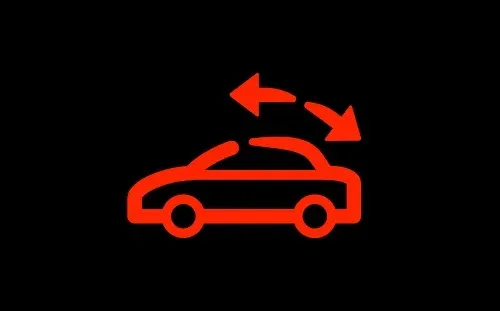
In convertible vehicles, this light illuminates when there is an issue with the roof’s opening or closing mechanism, indicating that the roof is not fully opened or closed.
Brake Hold System Indicator
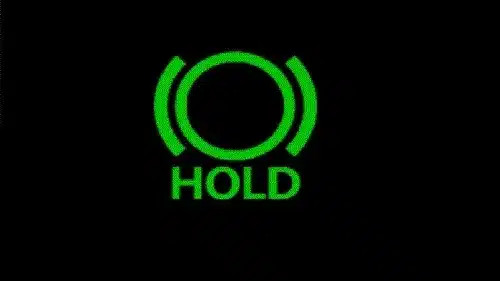
This light indicates that the brake holding system is active, ensuring the vehicle is securely held in the expected stopping position.
Blind Spot Detection Warning

This light illuminates when an object or another vehicle is detected in your vehicle’s blind spot, warning the driver of a potential collision risk.
Automatic Windshield Wipers Indicator

This light indicates that the windshield wipers have been set to automatic mode based on a rain-sensing sensor.
Emergency Brake System Problem Warning

This light indicates that the emergency brake system has been deactivated or that sensors are not functioning correctly due to dirt or obstruction.
Adaptive Cruise Control Active Indicator
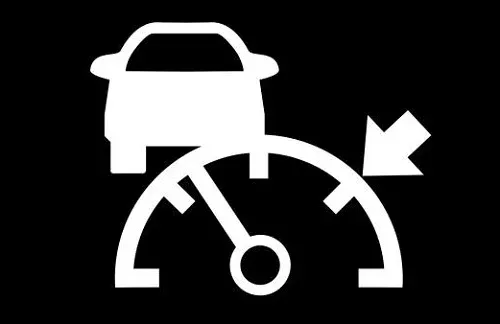
Adaptive cruise control automatically adjusts the distance from the vehicle in front, maintaining the set speed. This light indicates the system is active.
Winter Mode Active Indicator

This light shows that the vehicle’s winter mode has been activated to adapt to winter conditions.
Speed Limiter Active Indicator
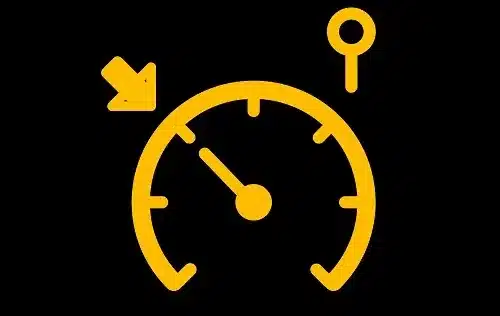
This indicator shows that the vehicle’s speed limiter feature is in use, preventing the vehicle from exceeding a certain speed.
Interior Air Circulation Warning
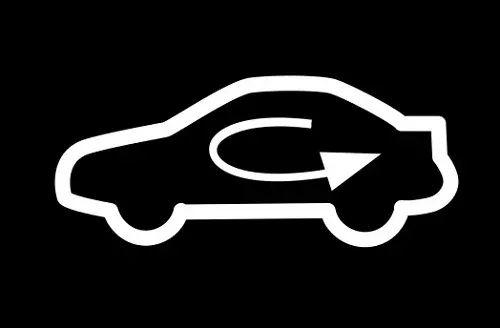
This indicator shows that the vehicle’s interior air circulation system is active. This feature, especially in cold weather conditions or when wanting to improve the air quality inside the vehicle, prevents air from outside and circulates the air within the vehicle.
Rear Spoiler Warning Light
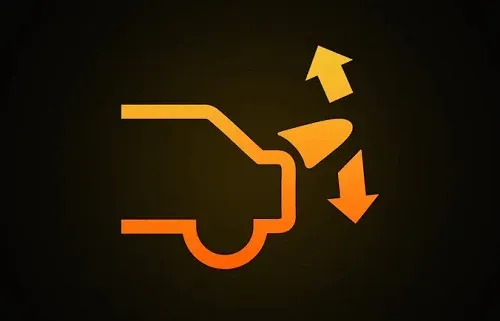
This light illuminates when a fault is detected in the vehicle’s rear spoiler or aerodynamic system. Designed to improve vehicle dynamics, a problem with this system can affect your driving performance.
Automatic Parking Pilot Activation Indicator
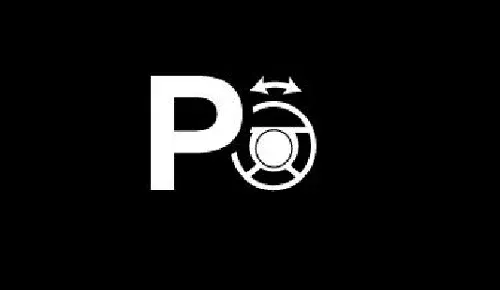
The parking pilot system is an advanced technology designed to assist you with parking your vehicle. When this light illuminates, it indicates that the system is active and ready to assist the driver during parking.
Lane Change Warning
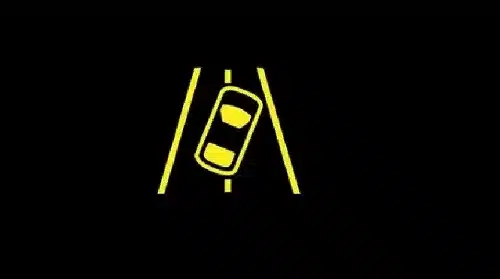
This light activates if you change lanes without signaling, warning against careless lane changes. This feature is designed to enhance traffic safety by alerting the driver to maintain proper lane discipline.
Lane Keeping Assist Activation Indicator

The lane-keeping assist system helps keep your vehicle within its lane by monitoring road markings. This light shows that the system is active, aiding you in maintaining lane integrity during driving.
Key Battery Low Warning
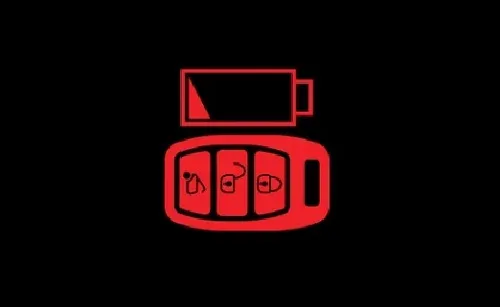
When the battery of your vehicle’s key starts to weaken, this warning light will illuminate. It indicates that the key’s battery requires replacement soon.
Ignition Key Problem Warning

This indicator signals a problem with your vehicle’s key system or ignition key, drawing your attention to a potential issue that needs addressing.
Hill Descent Control Activation Indicator
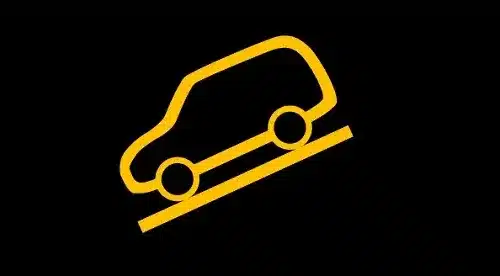
The hill descent control system automatically manages your vehicle’s speed on steep descents or rough terrain. This light signifies that the system is engaged, ensuring a safe descent by regulating speed.
Forward Collision Warning

This warning light illuminates when your vehicle gets too close to an object or vehicle in front, and a collision risk is detected. It draws the driver’s attention to prevent a potential collision.
ECO Mode Activation Indicator

ECO mode optimizes your vehicle’s operation for more economical and environmentally friendly driving. This light indicates that ECO mode is active.
Cruise Control Activation Indicator
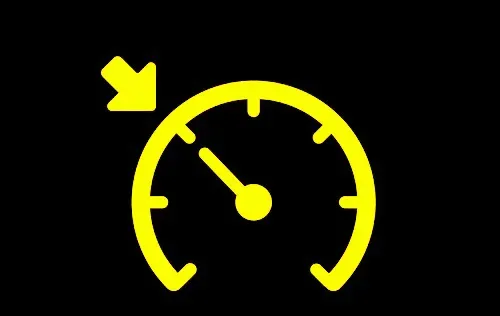
This light indicates that the cruise control system has been activated. The system maintains a constant speed set by the driver, offering comfort on long drives.
Diesel Engine Vehicles: Key Indicators Explained
Diesel engine vehicles operate on different principles than their gasoline counterparts, leading to unique maintenance needs. These specific requirements are communicated to drivers through various dashboard indicators. Extra warning lights in diesel vehicles provide critical information for the healthy operation of the engine and related systems. Here are some important additional indicators found in diesel vehicles, with detailed explanations:
Glow Plug Warning Light

In diesel vehicles, the glow plug is essential for ensuring the engine starts smoothly in cold weather conditions. This light illuminates when you turn the ignition and remains on until the engine reaches a sufficient temperature through the glow plugs’ heating. It’s advised not to start the engine until this light goes off. If the light stays on continuously or flashes, it may indicate a malfunction in one of the glow plugs, potentially making it difficult to start the engine in cold conditions.
Fuel Filter Warning Light

The fuel filter in diesel vehicles is critical for the engine’s healthy operation. It prevents dirt and other particles in the fuel from reaching your engine. The fuel filter warning light indicates the filter is clogged or full and needs to be cleaned or replaced. Ignoring this warning can lead to a decrease in engine performance and even damage.
Exhaust Fluid Warning Light
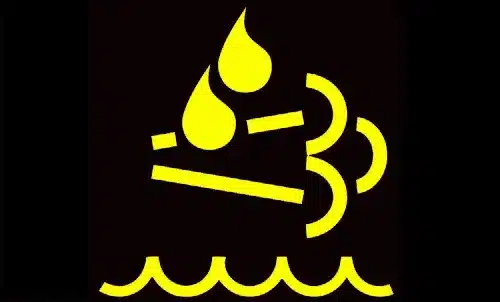
Diesel Exhaust Fluid (DEF) is an additive used to reduce exhaust gas emissions in diesel vehicles. This warning light indicates that the DEF tank is low and needs to be refilled soon. A very low level of DEF can result in the vehicle not meeting emission standards and experiencing performance loss.
Water in Fuel Filter Warning Light
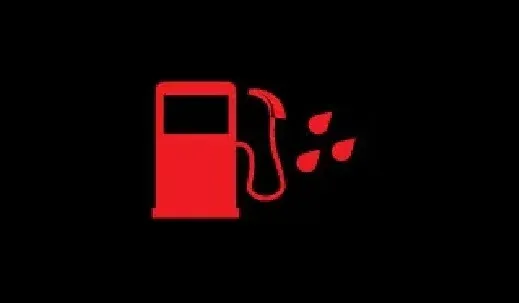
Diesel fuel can contain water particles, which can accumulate in the fuel filter. When the water in the fuel filter reaches its maximum level, this light illuminates, indicating that the water needs to be drained from the filter. Accumulated water in the filter can lead to freezing or corrosion in the fuel system, causing serious engine issues. Therefore, it’s important to heed this warning light and take the necessary action promptly.
These additional warning lights provide critical alerts for the maintenance and healthy operation of diesel vehicles. It’s important for drivers to understand the meanings of these lights and act swiftly when necessary, ensuring the vehicle’s longevity and high performance.






